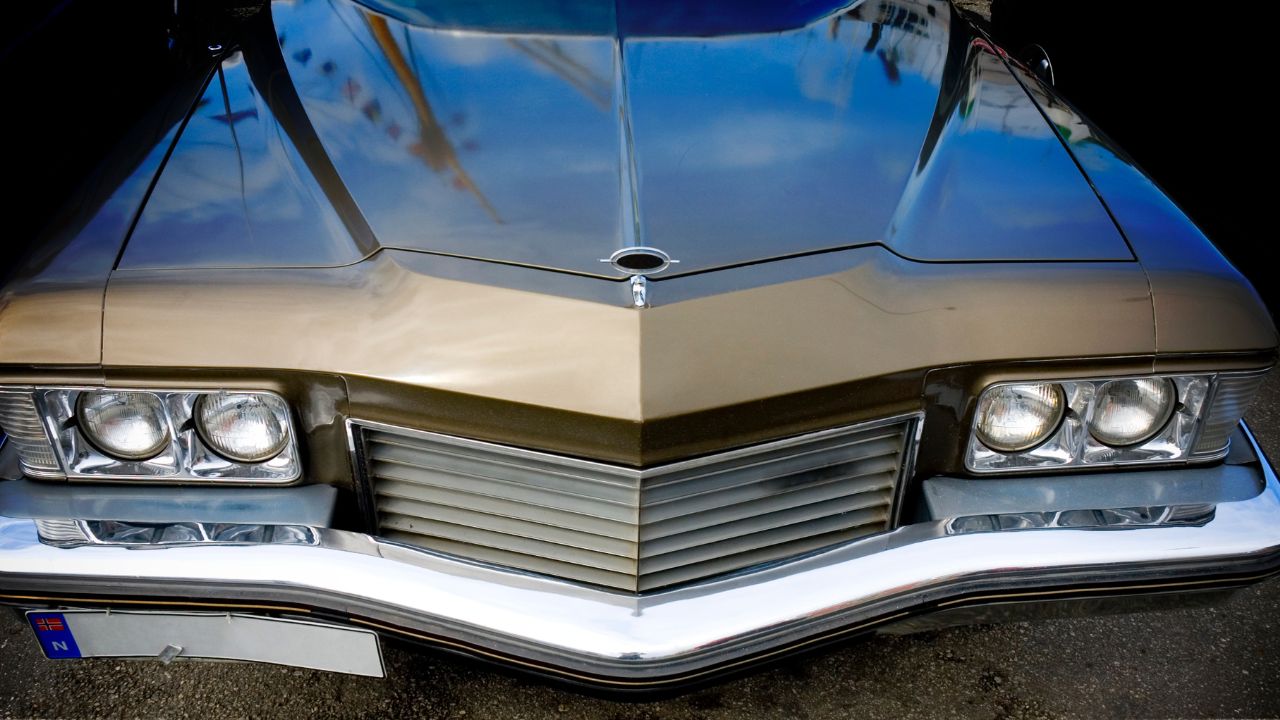
When it comes to horsepower, the 2012 Dodge Charger is a hefty contender. The Hemi-V8 engine, which is nearly as powerful as the street-legal version of its predecessors, is now more refined and civilized. The engine is 5.7 liters (or 345 cubic inch) in displacement. It measures 120.2-inches long and has a length of 299.9 inches.
Standard 292-horsepower Pentastar V6
The Dodge Charger five-seat sedan has the muscle car feel but comes loaded with features. The standard engine of the Dodge Charger is a 3.6L Pentastar V6 delivering 292 horsepower & 260 pound-feet. It achieves 31 mpg highway with its eight-speed automatic transmission. Dodge Charger's fuel-saving mechanism deactivates four engines when there is no load.
To give the Charger a smooth and refined drive, a 3.6-liter Pentastar V6 motor is paired to a TorqueFlite 8-speed automatic transmission. Standard power output is enough to propel the car from zero to sixty mph in 6.5 seconds. It can also reach a maximum speed of 154 miles per hour in less than five seconds. The standard 292-horsepower Pentastar V6 in the Dodge Charger has a 62 percent increase over the base 2.7-liter V6 in the previous model.

SRT8's 395-horsepower Pentastar V6
The Dodge Charger is a full-size sedan with a choice of three powerful engines: a base 3.6-liter Pentastar V6 with 275 horsepower and 260 pound-feet of torque, a 5.7-liter HEMI V8 with 370 horsepower and 395 lb-ft of torque, and a supercharged version with 410 horsepower and 450 lb-ft of torque. The standard all-wheel drive system is now available on all Chargers, while the SRT8 does not have an AWD system.
The Dodge Charger SRT8 engine was first introduced in 2005 and became the basis of the Corvette Super Bee. The SRT8 Charger SRT8 is a more extreme version of the Charger but doesn't include a V8 in it's engine bay. It is a shame since the Charger SRT8 car is quite powerful and can run straight with a Corvette.
R/T Road & Track's 460-horsepower Pentastar V6
The 2012 Dodge Charger is available as a SE, SXT. R/T, SRT8 and R/T Track trim levels. The 3.6L Pentastar V6 engine and the 5.7L HEMI V8 are its two premium engines. The 3.6L Pentastar V6 is one of the best V6 engines made by Dodge, and it produces 292 horsepower and 260 lb-ft of torque. Both engines are efficient. Pentastar V6 has a 31 highway mpg rating.
The Dodge Charger, which was produced between 1966 and 1978, was retired in 1983. A second version of the car was produced until 1987. Then, it was mothballed for two years before being revived in 2006. This Charger comes with the R/T Road & Track Pentastar-V6 engine. The Charger's R/T Road & Track 2012 model has been completely redesigned.

R/T Max's 480-horsepower Pentastar V6
Dodge introduced an eight speed automatic transmission for its Dodge Charger in 2012. This increased both performance as well as highway fuel economy. This model also came with a Beats by Dr. Dre audio system and improved navigation. The Charger is a great car. Here are some of the top reasons. This vehicle is the perfect fit for a family.
The Dodge Charger's new exterior and interior has been designed to have a contemporary feel. The base model comes with the Chrysler Pentastar V-6 that produces 292 horsepower. HEMI-powered models were also upgraded. The top SRT8 model got a 6.4-liter Pentastar v8 with 470 horsepower. The car now has WiFi and a Garmin GPS system. Driver assistance systems such as blind-spot monitoring and active cruise control were also available.
FAQ
Does it matter where I go to college?
It's not true. There is no difference in the programs offered by colleges for getting into automotive work. But, there are better programs at some schools than others. Look elsewhere if you want something more niche.
Is it worth learning to be a mechanic?
The answer to this question will depend on your goals for life. If you are looking for financial gain, then yes. However, if purpose and meaning are what you seek, then no.
If you don’t have any mechanical skills, it’s pointless to get into it. It will just waste your time. You won't become rich from it. It won't make you famous. It is unlikely that you will be made famous.
You'd have to spend years learning how things work. It would be expensive to have your car fixed by someone else. This is why most people don’t bother. They find something better to do instead.
Let's sum it up: If you want to make a lot of money, then do so. But if you want to live a meaningful life, stay away from the mechanic's industry.
What qualifications are necessary to become a truck driver mechanic?
While you may not have the formal qualifications to perform this job, your skills are well-rounded in working on engines and trucks. Your experience is invaluable as you know how to diagnose problems quickly and efficiently.
A solid understanding of diesel technology is also a plus. This will help you understand the components that are needed to fix our vehicles.
Is it difficult to become a mechanic apprentice
Although it's not an easy task, you will learn quickly and have many opportunities to advance.
You need to have patience and perseverance. It is also important to know how you can fix vehicles, trucks, or motorcycles.
Customers and family members will put pressure on your shoulders to help you succeed. But, you shouldn’t be pressured to make any decisions you aren’t happy with.
It could be a great job choice if you love fixing cars. This is a job that allows you to earn a decent income and grow your business.
But, you might prefer a different path. You might consider becoming a technician in this instance.
This is where you use your technical skills to support other workers. Technicians could benefit from your technical expertise to solve problems or teach new techniques.
Another option is to be a service advisor. This is where you can offer advice and assistance to customers who bring their vehicles to a garage.
Your decision will be based on what your priorities are. There are many options and you have the ability to choose the one that is right for you.
What's the difference between a mechanic and an automotive technician?
These two jobs are very similar but not identical. A mechanic repairs cars and an automotive technician performs maintenance.
A mechanic must be skilled in manual dexterity and able to complete simple tasks quickly. A mechanic must be able diagnose and fix problems quickly and accurately.
An automotive technician needs to be more technically skilled than a mechanic. They must be able to read blueprints and use tools such as drills and wrenches.
They should be able safely to perform complex procedures. They must also be familiarized in different types and electrical systems.
They must also be able comprehend how the various parts interrelate with one another.
The result is that a mechanic often earns less than an auto technician. Both careers have many options.
Statistics
- According to the BLS, the median annual salary for automotive service technicians and mechanics in the United States was $44,050 in May 2020. (uti.edu)
- 52% of Mechanics in the United States think their salaries are enough for the cost of living in their area. (indeed.com)
- There were 749,900 jobs available for automotive service technicians and mechanics in 2016, which is expected to grow by six percent through 2026. (jobhero.com)
External Links
How To
How to diagnose your vehicle properly for repair
You should first examine the symptoms your car is showing to determine if it requires repairs. These steps will help you diagnose your car properly.
-
Check engine lights. Check the dashboard light indicators such as the engine light indicator, the oil pressure gauge, the battery light indicator, the coolant temperature gauge, and the RPM gauge. If any of them have been flashing for several days, it may mean something is wrong with your vehicle.
-
Examine the treads of the tires. Tires that are worn can cause issues with handling and braking. It is also important to inspect the wheel treads. They should be clean and smooth. You can do this by taking off the wheels. Use a flashlight to see how well the treads are worn.
-
Check the level of brake fluid. You should always keep track of the amount of brake fluid in your vehicle. This ensures that your brakes work properly. If the brake fluid level is low, your brakes might fail when you apply pressure to them.
-
The suspension system should be tested. It is common for vehicles to have a suspension system which absorbs shocks or vibrations. It provides better control and allows smoother acceleration and deceleration. Your vehicle might feel wobbly, or shake uncontrollably if it has a bad suspension. Try putting some weight on your front or rear axle to determine if you have a suspension problem.
-
Examine the steering column. The steering column connects the steering wheel to all other components of the vehicle. Accidents often damage steering columns. Replace it if your steering column feels loose or unsteady.
-
Observe the exhaust pipes. Exhaust pipes help move gases from the combustion chamber to the atmosphere. Your cabin will be effected if your exhaust pipe cracks or leaks. It is also important to repair any bends in your tailpipe immediately.
-
Look under the hood. Look underneath your hood to see if anything looks strange. There could be fluid leaking from your engine. Also, professional technicians should be called if you detect an unusual smell coming out of your engine compartment.
-
Check the air filter. The outside environment can collect dust and other debris in your vehicle's air filters. Vehicles that have a dirty air filter will not run well. Replace your air filter regularly.
-
The fan belt should be checked. Your vehicle's fanbel connects the engine and transmission. If it breaks, the engine won't turn over. The process of replacing the belt is straightforward. All you need is a screwdriver and some pliers.
-
Make sure you inspect the radiator hoses and hoses. The radiatorhose carries water from your radiator to the engine. If it becomes cracked or damaged, it can leak hot liquid onto the engine. To repair the hose, you will only need to use a pair needle-nosepliers and a wire brush.
-
You should inspect the windshield wipers. Windshield wipers use electricity to clean away snow and rain. If they stop functioning, they can leave streaks in your window glass. Change the washer fluid to fix the problem.
-
The battery cables should be checked. Your car's electrical system is powered by batteries. If you are replacing batteries, disconnect the negative cord first. Failure to do so can damage your alternator.
-
Pay attention to your headlights. The headlights provide illumination for the road ahead. Bad visibility can be caused by headlights that don't work correctly. Inspect the bulbs for signs of burnt out.
-
Check the lights. If you approach other drivers at night, lights will warn them. One that doesn't work could cause you to be distracted, and possibly lead to an injury.
-
Make sure you check your brakes. Brakes will reduce the speed of your car in case of an accident. If your brakes aren't working properly, you may lose control and crash into other cars.
-
Make sure to change the oil. Keep your engine lubricated with oil. It helps keep metal parts from getting too worn down. It is recommended to change the oil each month.